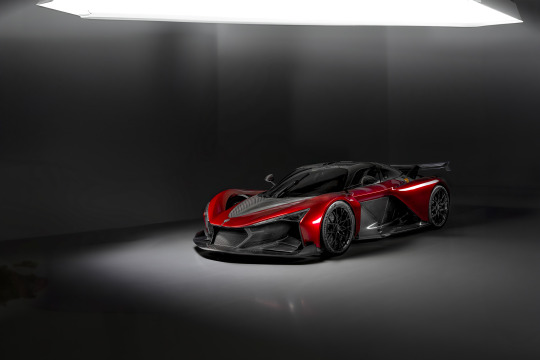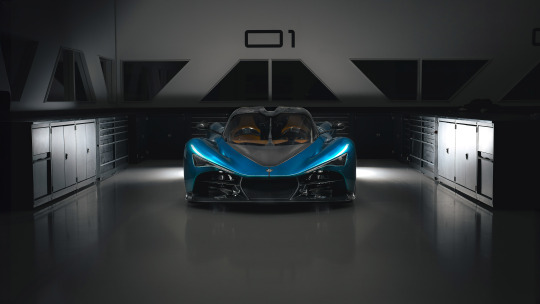#Automotive Turbochargers Market
Explore tagged Tumblr posts
Text
Boosting Efficiency: Insights into the Automotive Turbochargers Industry
The Automotive Turbochargers Industry stands as a pivotal cornerstone in enhancing vehicle performance and fuel efficiency. This comprehensive analysis delves into the nuances, trends, and technological advancements driving the turbocharger sector towards greater efficiency.
Turbocharger Evolution
Historical Progression
The inception of turbochargers in the automotive sphere dates back to the mid-20th century, marking a significant leap in engine performance. Turbocharging technology aimed at augmenting engine power by harnessing exhaust gases to enhance combustion efficiency.
Technological Advancements
Recent advancements in turbocharger technology have led to the development of high-precision, variable geometry turbochargers. These innovations optimize engine performance across varying driving conditions, fostering both power and fuel efficiency.
Market Trends
Embrace of Downsized Engines
The industry is witnessing a notable trend towards downsized engines coupled with turbocharging. This combination aims at achieving higher power outputs from smaller engine displacements, resulting in enhanced fuel economy without compromising performance.
Buy The Full Report for Additional Automotive Turbochargers Market Forecast Insights or Download a Free Sample Report
Integration of Electric Turbochargers
The emergence of electric turbochargers, powered by electric motors, is revolutionizing the industry. These turbochargers eliminate traditional turbo lag, delivering instantaneous power response for a seamless driving experience.
Focus on Hybridization
Turbochargers are playing a pivotal role in hybrid powertrains, optimizing the performance of both internal combustion engines and electric motors. This integration maximizes efficiency while minimizing emissions.
Driving Forces
Regulatory Pressures
Stringent emission regulations worldwide are compelling automakers to adopt turbocharging technologies to meet stringent fuel efficiency and emission standards.
Consumer Demand for Efficiency
Consumer preferences for vehicles that strike a balance between power and fuel efficiency are propelling the turbocharger industry forward. Turbocharged vehicles offer improved performance without compromising on fuel economy.
Forecast and Future Prospects
Continued Growth Trajectory
The Automotive Turbochargers Industry is poised for sustained growth, driven by ongoing technological innovations and the persistent pursuit of fuel-efficient, high-performance vehicles.
Innovation in Electric Turbocharging
Electric turbochargers are anticipated to witness rapid evolution, with further enhancements in efficiency and integration into mainstream vehicle models.
Conclusion
In conclusion, the Automotive Turbochargers Industry stands at the forefront of efficiency-driven automotive technology. The ongoing advancements in turbocharging technologies cater to evolving consumer demands and regulatory imperatives, promising a future where vehicles achieve heightened performance and efficiency hand in hand.
0 notes
Text
Automotive Turbocharger Market Is Expected to Witness Incredible Growth by 2024-2030
The global Automotive Turbocharger Market is poised for robust growth, projected to reach approximately US$ 37,229 Mn by 2030, according to a recent report by Acumen Research and Consulting. With a compound annual growth rate (CAGR) of 10.7% during the forecast period, the turbocharger industry is rapidly evolving, driven by rising vehicle performance requirements, regulatory measures for…
0 notes
Text
Steady Growth of 6.4% CAGR in Automotive Lighting Market to USD 69 Billion by 2033
The global Automotive Turbocharger Market is expected to be worth USD 16.6 Billion. The market is expected to reach USD 41.5 Billion by 2033. It is anticipated to expand at an 9.6% CAGR throughout the forecast period.
By compressing the intake air, turbochargers can potentially increase engine efficiency by improving combustion and power production. This can be particularly crucial if governments all over the world continue to enforce tough emission standards. They should encourage automakers to create more fuel-efficient cars.
In automotive turbochargers, a turbine is powered by exhaust gas. More fuel might burn thanks to the air compressor's rotating action and additional oxygen or air it forces into the cylinder. Auto turbochargers increase the air pressure that enters the engine to increase fuel economy.
Request For a Sample of Market Research: https://www.futuremarketinsights.com/reports/sample/rep-gb-135
Variable geometry (VG) turbochargers maintain great supercharging efficiency at low to high engine rotation speeds in comparison to waste gate turbochargers. This is caused by the integration of variable mechanism stator vanes at the turbine rotor blade's input nozzle.
Combining mirror cycle direct injection gasoline engines with variable geometry turbochargers could increase a vehicle's fuel efficiency. A foundation is laid for the introduction of variable geometry turbochargers. This is caused by better knocking limit from direct injection and cooled exhaust gas recirculation.
E-turbochargers, also known as electric turbochargers, are anticipated to be quite popular throughout the review era. During the forecast period, these are anticipated to have a favorable effect on the worldwide automotive turbocharger industry.
E-turbochargers, in contrast to typical automotive turbochargers, contain an electric motor that aids in spooling up the turbocharger and removing turbo lag. As a result, it has the ability to produce electricity for the vehicle network. This might enable the alternator to turn on with less effort from the engine of the car, conserving gasoline.
The primary driver of rising engine performance demand is the need for more power density and precise torque for downsizing and down-speeding. This could improve fuel efficiency while keeping the dynamic performance of the automobiles.
Key Takeaways from the Automotive Turbocharger Market Study:
In the historical period 2018 to 2022, the global automotive turbocharger industry expanded at a CAGR of 8.7%.
The United States automotive turbocharger industry is expected to reach a valuation of USD 1.8 Billion by 2033.
Germany automotive turbocharger industry is expected to top a value of USD 1.4 Billion by 2033.
By product type, the VGT segment is expected to dominate the automotive turbocharger industry with a CAGR of 9.8% from 2023 to 2033.
China automotive turbocharger industry is anticipated to cross a valuation of USD 3.1 Billion in 2033.
Competitive Landscape
The automotive turbocharger industry has a highly competitive landscape, with a significant number of players vying for high market shares. Several significant participants in this industry comprise Continental AG, Garett Motion Inc., Cummins Inc., Mitsubishi Heavy Industries Ltd., Toyota Industries Corporation, Eaton Corporation Plc, BorgWarner Inc., IHI Corporation, BMTS Technology GmbH & Co. KG, and Weifang FuYuan Turbochargers Co., Ltd. among others.
Several businesses would concentrate on increasing the range of products they offer to cater to demands of multiple vehicle segments. Offering turbochargers for a wider range of engine sizes and configurations is one way to do this. Additionally, turbochargers are being developed for alternative fuel vehicles such as electric and hydrogen-powered cars.
A select range of participants are making investments to create strategic alliances and partnerships with other businesses in the automobile sectors. Manufacturers, suppliers, and IT firms are a handful of these.
They want to create fresh and inventive products by utilizing their resources and experience. To increase their footprint, manufacturing organizations are putting even more of an emphasis on new product launches and acquisition tactics.
Automotive Turbocharger Market Outlook by Category
By Product Type:
Waste Gate
VGT
Twin Turbo
By Vehicle Type:
Passenger Cars
LCV
HCV
Agricultural Machinery
Construction Machinery
By Fuel Type:
Gasoline
Diesel
By Sales Channel:
OEM
Aftermarket
By Actuator:
Hydraulic
Electric
Pneumatic
By Region:
North America
Latin America
Asia Pacific
Middle East & Africa
Europe
0 notes
Text
The automotive turbocharger market was estimated to be worth USD 15.01 billion in 2023. From 2024 to 2030, the market's total revenue is projected to increase at a compound annual growth rate (CAGR) of 8.2%, or close to USD 26.07 billion.
0 notes
Text
By 2024, the Automotive Turbocharger Market is estimated to be valued at $16.26 billion, with a projected CAGR of 6.95% to reach $31.83 billion by 2034.
#Automotive Turbocharger Market#Automotive Turbocharger Report#Automotive Turbocharger Industry#Automotive#BISResearch
0 notes
Text
Automotive Turbocharger Market Opportunities Assessment Analysis by 2030

The qualitative report Published by Exactitude Consultancy research on the Automotive Turbocharger Market offers an in-depth examination of the current trends, latest expansions, conditions, market size, various drivers, limitations, and key players along with their profile details. The Automotive Turbocharger market report offers the historical data for 2018 to 2023 and also makes available the forecast data from the year 2024 to 2030 which is based on revenue. With the help of all this information research report helps the Market contributors to expand their market positions. With the benefit of all these explanations, this market research report recommends a business strategy for present market participants to strengthen their role in the market. This report analyzes the impact of the Covid 19 pandemic on the Automotive Turbocharger Market from a Global and Regional perspective.
Automotive turbochargers market size was valued at USD 8.82 billion in 2023 and is projected to reach USD 11.36 billion by 2029, growing at a CAGR of 2.86% from 2022 to 2029.
For The Full Report Click here:
https://exactitudeconsultancy.com/reports/6426/automotive-turbocharger-market/
#Automotive Turbocharger Market Analysis#Automotive Turbocharger Market Business#Automotive Turbocharger Market Trends 2024-2030#Automotive Turbocharger Market Size#Automotive Turbocharger Market Growth#Automotive Turbocharger Market Forecast 2030#Automotive Turbocharger Market Technology
0 notes
Text
Diesel Category Leads the Automotive Turbocharger Market
The automotive turbocharger market is valued at around USD 15.2 billion in 2023, which will touch USD 26.2 billion by 2030, mounting at a rate of 8.2% by the end of this decade. This is as a result of the strict emission norms implemented by governments in view of the ecological concerns and to attain sustainable expansion. A turbocharger aids in decreasing emissions and increasing the…

View On WordPress
#Automotive Turbocharger Market#Automotive Turbocharger Market Outlook#Automotive Turbocharger Market Share#Automotive Turbocharger Market Size#Automotive Turbocharger Market Trends
0 notes
Text
Global Automotive Turbocharger Market to reach USD 19.7 billion by 2027

The global automotive turbocharger market is expected to reach USD 19.7 billion by 2027, according to a new report by VynZ Research. The market is projected to grow at a CAGR of 10.1% during the forecast period from 2021 to 2027.
The growth of the automotive turbocharger market is being driven by a number of factors, including the increasing demand for fuel-efficient vehicles, the rising adoption of stringent emission regulations, and the growing popularity of turbocharged engines in passenger cars, light commercial vehicles, and heavy-duty vehicles.
Get a free sample copy of the research report: https://www.vynzresearch.com/automotive-transportation/automotive-turbocharger-market/request-sample
Key trends in the global automotive turbocharger market:
The increasing demand for fuel-efficient vehicles is one of the key trends driving the growth of the global automotive turbocharger market. Turbochargers help to improve fuel efficiency by increasing the amount of air that is forced into the engine, which allows the engine to burn more fuel efficiently.
The rising adoption of stringent emission regulations is another key trend driving the growth of the market. Turbochargers help to reduce emissions by improving fuel efficiency and by reducing the amount of pollutants that are emitted from the engine.
The growing popularity of turbocharged engines in passenger cars, light commercial vehicles, and heavy-duty vehicles is also a key trend driving the growth of the market. Turbochargers are increasingly being used in these vehicles to improve performance and fuel efficiency.
Regional analysis of the global automotive turbocharger market:
The Asia Pacific region is expected to be the largest market for automotive turbochargers in the coming years. This is due to the increasing demand for fuel-efficient vehicles in the region, as well as the rising adoption of stringent emission regulations. The European and North American markets are also expected to grow significantly during the forecast period.
Key players in the global automotive turbocharger market:
Some of the key players in the global automotive turbocharger market include Garrett Motion Inc., Continental AG, BorgWarner Inc., Mitsubishi Heavy Industries, Ltd., IHI Corporation, Honeywell International Inc., Cummins Inc., ABB, Linamar Corporation, and Rotomaster.
Conclusion:
The global automotive turbocharger market is expected to grow significantly in the coming years. This is due to the increasing demand for fuel-efficient vehicles, the rising adoption of stringent emission regulations, and the growing popularity of turbocharged engines in passenger cars, light commercial vehicles, and heavy-duty vehicles.
About Us:
VynZ Research is a global market research firm offering research, analytics, and consulting services on business strategies. We have a recognized trajectory record and our research database is used by many renowned companies and institutions in the world to strategize and revolutionize business opportunities.
Source: VynZ Research
#Automotive Turbocharger#Automotive Turbocharger Market#Automotive Turbocharger Market Size#Automotive Turbocharger Market Share#Automotive Turbocharger Market Analysis#Automotive Turbocharger Market Growth#Automotive Turbocharger Market Value#Automotive Turbocharger Market Trend#Automotive Turbocharger Market Demand
0 notes
Text
Global Automotive Turbocharger Market Report, Geography Trends, Segmented by Fuel Type and Forecast to 2027

VynZ Research has predicted that the Global Automotive Turbocharger Market Size will reach USD 19.7 billion by 2027, with a projected CAGR of 10.1% during the forecast period from 2021-2027.
The research report offers an in-depth analysis of the market, including segmentation, dynamics, competition, and regional growth, with the latest trends and strategies for vendors in the Global Automotive Turbocharger Market.
Get a sample copy: https://www.vynzresearch.com/automotive-transportation/automotive-turbocharger-market/request-sample
The report also provides answers to key questions such as which geographical areas will be most lucrative, what factors will shift the demand for Automotive Turbocharger market Growth, and how evolving trends will impact the market.
The report includes vendor profiles for top players in the market:
GARRETT MOTION INC.
Continental AG
BorgWarner Inc.
MITSUBISHI HEAVY INDUSTRIES, LTD.
IHI Corporation
Honeywell International Inc.
Cummins Inc.
ABB
Linamar Corporation
Rotomaster
Market segment analysis
The segments of the report are classified byFuel Type, Technology, Vehicle Type and Distribution ChannelGeography and factors dominating the market and impacting the market growth plan during the forecast period.
The global market is segmented into the following sub-segments: -
Fuel Type Insight and Forecast 2015-2027
Gasoline
Diesel
Technology Insight and Forecast 2015-2027
VGT/VNT
Wastegate
Twin-Turbo
Vehicle Type Insight and Forecast 2015-2027
PCV
LCV
HCV
Distribution Channel Insight and Forecast 2015-2027
OEM
Aftermarket
The forecast methodology includes identifying the variables and their impact on the market, evaluating the trend of the regional market, and examining past market trends along with challenges analyses. The report also provides an understanding of the framework for adoption, development, distribution, and regulation.
The report provides a detailed overview of the market, SWOT analysis, business plans of each vendor, and in-depth analyses of current market trends, trend forecasts, and growth factors. It also provides a thorough review of the vendor landscape, competitive analysis, and important market strategies.
About Us: -
VynZ Research is a global market research company providing research, analytics, and consulting services for business plans, with specialized market research reports based on information predicted and estimated by industry professionals and experts. Their top-down and bottom-up approaches, data triangulation, and other techniques enable the market research leader to validate the data and deliver a major market study.
Source: VynZ Research
#Automotive Turbocharger#Automotive Turbocharger Market#Automotive Turbocharger Market Size#Automotive Turbocharger Market Share#Automotive Turbocharger Market Analysis#Automotive Turbocharger Market Growth
0 notes
Text
0 notes
Text


Zenvo Aurora Agil and Tur Hit Japan for the First Time
After a hugely successful run of events in the Middle East, the world tour of the Zenvo Aurora Agil and Tur continues, with an event in Tokyo, Japan with partners Bingo Sports, headed by Shinji Takei.
Hand-built in Præstø, Denmark, Zenvo Automotive pride themselves on their Danish foundations. The all-new Aurora will take inspiration from Danish design principles and be powered by a 6.6 liter flex fuel enabled, quad-turbocharged V12 engine that will produce at least 1250bhp at 8,000 rpm and rev to 9800 rpm. The Aurora will be fully homologated for global markets and will showcase Zenvo’s exceptional craftsmanship and attention to detail, all designed in-house. Zenvo Automotive focuses on limited-edition hypercars, available to those interested in completely bespoke manufacturing experiences and unique driving abilities.
The Zenvo Aurora Agil and Tur will be on display at the Bingo Sports showroom in Tokyo from March 28th – April 7th 2-25, 2024.
84 notes
·
View notes
Text
Car chases aren't as great as Hollywood makes them seem. On the screen, they're fun, exciting, maybe even a little sexy. In reality, you're basically constantly looking at your water temperature gauge to see if you're going to nuke a head gasket running the engine flat out for this long. Plus, you're driving something with the approximate horsepower of half a drunk bicyclist.
Sure, you could argue I brought it on myself. Stealing that prototype turbocharger from the automotive museum, in plain sight of Mitsubishi's finest security thugs, was going to get me in hot water one way or another. I just didn't think it would elevate to the level of a literal car chase, but it turns out those hard-working grunts had watched a pretty spicy action flick on the flight over, and were ready to find out what their rental hybrid Malibu could do.
In my defence, I really wanted that turbo. And it wasn't doing anyone any good, sitting in that alarmed display case. Most car parts aren't all that exciting to look at: if anything, I was giving the three-diamond crew some free marketing. This is what was on my mind as I blew one of the rear spring shackles driving over some thankfully-abandoned playground equipment while shortcutting across a minor residential development. Don't worry: the turbo was fine, buckled into a well-loved baby seat in the back of the car.
While I made it away from Japan's finest turbocharger-producing thugs, my car was not quite as lucky. I finally slid to a stop at a community centre parking lot, the force of the handbrake turn bending the corroded unibody in such a way that the doors would no longer shut. I had to hoof it from there, a prospect which the angry guards chasing me likely considered to be "too easy" and maybe even a little pathetic. They stayed behind, pleased that they had at least immobilized my shitbox. Maybe they even planned to run the license plate, a prospect which I found more than a little funny because I had punched it out of an old snow shovel the morning before.
194 notes
·
View notes
Photo










BMW M1 Turbo (the extraordinary case of the BMW M1 with 1000 hp)
Ignore the livery. Or don’t ignore it. Like with every other Jägermeister racing car, it might be hard to actually walk past this orange beast without giving the standout paint job at least one glance. It was designed to attract attention, just how Günter Mast — the man that gave his OK to race cars with the famous stag on the bonnet — intended. The truth of the matter is, however, that this particular car’s convoluted history is as complicated as the story of the BMW M1 itself. Therefore this car is not what it seems to be, as the orange Jägermeister livery stems from the imagination of the man that rebuilt the car, the legendary M1 whisperer Fritz Wagner. And if you ask anyone at Jägermeister headquarters about the car, they will potentially reply with a polite letter from their legal department. To paraphrase Samuel Beckett: there’s nothing funnier than tragedy. And so, the story of the BMW M1 could be perceived as one of the automotive world’s funniest. The car was originally designed with the ambition to create the greatest, mid-engined racing car of all time. One that would beat Porsche’s dominating 935 in the all-important Group 5. A masterpiece made of speed and German reliability which, in reality, became a car that had to be reverse engineered to be sold for the road. All because of changes in racing rules and homologation, which stipulated how many cars had to be produced before a particular model was allowed to hit the track. The production number of 400 cars — which seems so minuscule by today’s standards — turned out to be the first problem on a long list of unfolding disasters.
In essence, the life of this beautiful, light, well-made machine that had been designed by Giorgetto Giugiaro, who reworked Paul Bracq’s original prototype, was plagued by bad luck and bad decisions. The fact that Lamborghini — who were supposed to produce it at their factory — went bust because of copyright fraud and embezzlement of funds didn’t help. However, it was the rushed solution to disperse production all over Europe that was the final nail in the coffin. Marchese built the car's tube frame, TIR molded the fiberglass, Italdesign mated the two and installed the interior, then the M1 was shipped from Italy to Stuttgart, where Baur would install the BMW hardware, after which in Munich BMW Motorsports would do the final touches and quality control. It made the M1 almost a quarter more expensive than any equivalent Ferrari or Lambo sold at the time. Case closed.
British generals in the second world war would often joke that Germans were not very good when it came to Plan B. This might be true. In the end, even if BMW’s head of Motorsport Jochen Neerpasch, the brilliant man that he is, thought of a way to market the M1 with the Procar series, in which F1 drivers like Niki Lauda, Clay Regazzoni, and Nelson Piquet would race the cars against privateers, as a prelude to the weekend's Formula 1 race, too few examples were made for the car to ever officially leave Group 4 as was originally intended. Later on, those teams who managed to finally race in Group 5, years after BMW abandoned the programme in order to enter to F1, found the M1 simply uncompetitive. Even the twin-turbocharged models built by Schnitzer, which developed 800 hp and more from their straight six engines, were plagued by problems. his finally brings us to this particular, rather unusual example. It was allegedly built for the famous Walter Brun racing team, who later on won the Group C World Championship with a Jägermeister-liveried Porsche 956. Brun’s friendship with Paul Rosche, the man who turbocharged the BMW 2002, gave rise to the idea of installing the M88 turbo engine originally planned for the March Group-5 car into a modified M1 Procar chassis wrapped into Group 5 bodywork. However, the car was never raced. Why? Even at BMW no one knows. Particularly good news considering that back in the day, when this 1090 kg machine was put on a dyno, it put out 1000 hp and 930 NM of Torque. A reading obtained just before the machine broke while the car apparently still wanted to keep going. Now in the hands of a new owner who intends to race it regularly, it will have plenty of opportunity to shine. And so a new chapter unfolds…
#BMW M1 Turbo#Jägermeister#porsche#Ferrari#lamborghini#Group 4#Niki Lauda#Clay Regazzoni#Nelson Piquet#Group 5#Walter Brun#Porsche 956#BMW 2002
209 notes
·
View notes
Text
0 notes